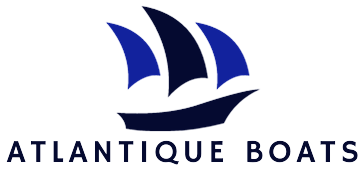When it comes to measuring speed on the water, the unit of measurement that often leaves people scratching their heads is the knot. While most of us are familiar with miles per hour or kilometers per hour, knots may seem like a foreign concept. So, just how fast is 30 knots on a boat? Buckle up and get ready to embark on a journey where we dive into the world of nautical speed and unravel the mysteries of knots.
Imagine cruising through the open sea, wind in your hair and the thrill of adventure coursing through your veins. The captain shouts from the helm, “We’re hitting 30 knots!” But what does that really mean? To put it simply, a knot is a unit of speed that represents one nautical mile per hour. Derived from the days of sailing ships, it was measured by counting the number of knots in a line thrown overboard, which would then be timed for a specific duration. Today, with advancements in technology, speed on boats is measured using GPS systems and sophisticated instruments. So, strap on your life jacket and let’s explore the exhilarating world of 30 knots on a boat, where speed and the sea collide.
Understanding Knots: How Fast is 30 Knots on a Boat?
In the world of boating, understanding knots is essential to navigate the waters safely and efficiently. One common question that arises is, “How fast is 30 knots on a boat?” In this article, we will delve into the concept of knots and explore the speed and significance of 30 knots on a boat.
What are Knots and How are They Measured?
Knots are a unit of measurement used to determine the speed of a boat or any other water vessel. It represents one nautical mile per hour, which is slightly longer than a regular mile. To calculate the speed in knots, you divide the distance traveled in nautical miles by the time taken in hours.
Now, let’s focus on the speed of 30 knots on a boat. At this velocity, a boat covers a distance of 30 nautical miles in one hour. To put it into perspective, it’s equivalent to approximately 34.52 miles per hour or 55.57 kilometers per hour. This speed is considered quite fast in boating terms and requires skilled handling and experience to operate the vessel safely.
The Significance of 30 Knots on a Boat
When a boat reaches a speed of 30 knots, it enters the realm of planning hulls. Planning hulls are designed to rise up and glide on top of the water, reducing drag and increasing speed. This enables the boat to travel faster and more efficiently, making it suitable for various activities such as water skiing, wakeboarding, or reaching a destination quickly.
Additionally, boats capable of reaching 30 knots are often used for emergencies and search and rescue missions. Their speed allows them to swiftly respond to distress calls and reach the scene promptly. However, it is crucial to remember that operating a boat at high speeds requires caution and adherence to safety guidelines to avoid accidents and ensure the well-being of all passengers on board.
Frequently Asked Questions
In this section, we have compiled some commonly asked questions about the speed of 30 knots on a boat. Read on to find answers to these queries.
Q: How fast is 30 knots on a boat?
When we refer to a speed of 30 knots on a boat, we are actually talking about the boat’s velocity in nautical miles per hour (knots). One knot is equivalent to one nautical mile per hour. Therefore, a boat traveling at 30 knots is moving at a speed of 30 nautical miles per hour.
This speed is quite fast and is commonly seen in high-performance powerboats, racing yachts, and military vessels. It allows boats to cover long distances efficiently and is often associated with thrill-seeking activities such as water skiing, wakeboarding, and racing competitions.
Q: Is 30 knots considered a fast speed on a boat?
Yes, 30 knots is generally considered a fast speed on a boat. It is equivalent to approximately 34.5 miles per hour or 55.6 kilometers per hour. This speed allows boats to cruise swiftly through the water, making it suitable for various purposes, including recreational activities and professional boating.
However, it’s worth noting that the perception of “fast” can vary depending on the type of boat and its intended use. While 30 knots may be considered fast for a recreational boat, high-performance racing boats and military vessels can achieve much higher speeds.
Q: How does 30 knots compare to other common boat speeds?
When comparing 30 knots to other common boat speeds, it falls on the higher end of the spectrum. Here are some approximate conversions for better understanding:
– 30 knots = 34.5 miles per hour
– 30 knots = 55.6 kilometers per hour
– 30 knots = 51.4 feet per second
These conversions show that 30 knots is faster than the average cruising speed of most recreational boats, which typically range between 20 to 25 knots.
Q: What factors can affect the speed of a boat at 30 knots?
Several factors can affect the speed of a boat traveling at 30 knots. Some of these factors include:
– Boat type and design: Different boat designs have varying levels of hydrodynamics, which can impact speed.
– Hull condition: A clean and well-maintained hull reduces drag and helps in achieving higher speeds.
– Engine power: Boats with more powerful engines can generate greater thrust and achieve higher speeds.
– Weight and load: Excess weight or improper distribution of load can hinder a boat’s performance and affect its top speed.
Q: Is it safe to travel at 30 knots on a boat?
Traveling at 30 knots on a boat can be safe, provided that the boat is designed for such speeds and the appropriate safety precautions are taken. It is crucial to ensure that the boat is in good condition, equipped with necessary safety equipment, and operated by a skilled and experienced captain.
It’s important to note that factors such as weather conditions, sea state, and boat handling skills can significantly impact safety at high speeds. It is always recommended to follow safe boating practices, including adhering to speed limits, wearing life jackets, and being aware of potential hazards in the water.
In conclusion, understanding the speed of 30 knots on a boat is crucial for any maritime enthusiast or professional. As we have explored, 30 knots translates to approximately 34.5 miles per hour or 55.6 kilometers per hour. This impressive speed allows boats to traverse the water with agility and efficiency, making it an ideal choice for those seeking thrilling experiences or seeking to cover long distances in a short amount of time.
However, it is important to note that the effects of 30 knots can vary depending on factors such as sea conditions, wind direction, and the size and type of the vessel. While 30 knots may seem exhilarating on a small speedboat, it could be more challenging to handle on a larger vessel. Therefore, it is crucial for boat operators to have the necessary skills, experience, and knowledge to safely navigate at this speed.
In conclusion, 30 knots on a boat is an impressive speed that offers both excitement and versatility. Whether you are a seasoned sailor or a curious onlooker, understanding the implications and capabilities of this speed can deepen your appreciation for the world of boating and the power of the open water.

















